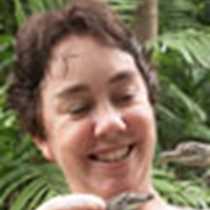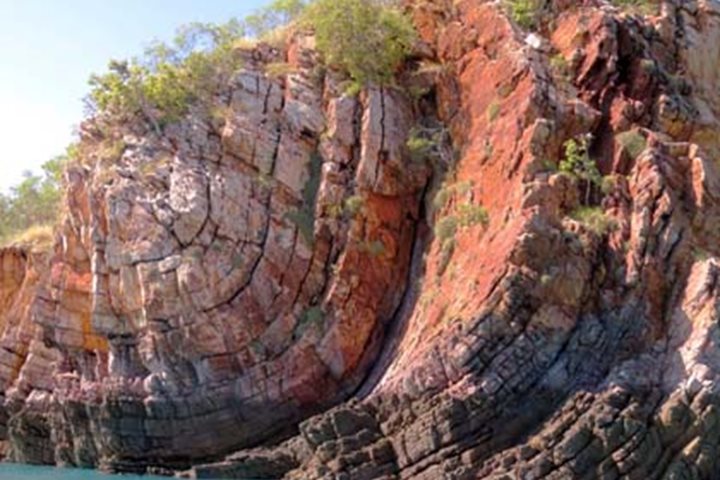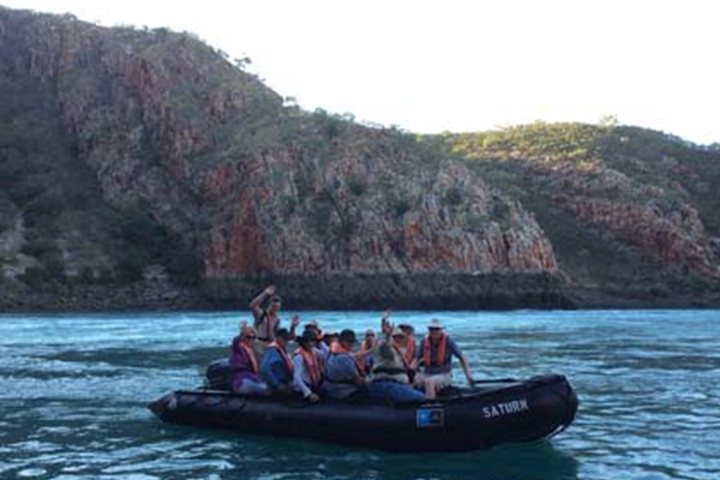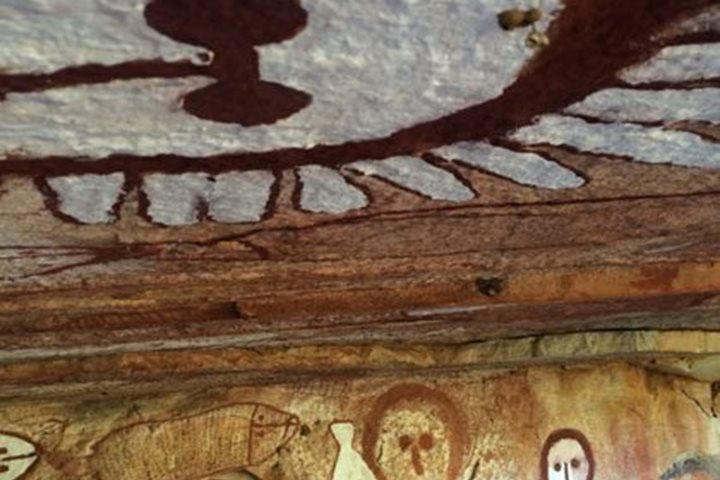Today the National Geographic Orion arrived at Vansittart Bay, and a couple of beach landings awaited our guests. They were about to experience two quite different stories; one concerning Aboriginal art and history, and the other about human survival during the Second World War.
After another scrumptious breakfast, our intrepid guests headed out for the first beach landing on Jar Island, so named after the Macassan-like clay jars discovered by early surveyors. But we were here to visit three separate galleries, all adorned with Bradshaw, or Gwion Gwion, art.
“Bradshaw” art is named after Joseph Bradshaw, a pastoralist who recognized that the artwork was very different from the more modern Indigenous artwork he was familiar with. We now recognize that this represents some of the oldest artwork in Australia, some of it at least 17,000 years old and linking back to the previous Ice age. Our guests were amazed to see just how old these works were, and still retain such detail. A sandstone shrike-thrush (Colluricincla woodwardi) could be seen and heard around the first gallery, the legendary Gwion Gwion bird that, according to Aboriginal legend, created the art by tapping the rock with its bloodied beak. Explorers able to climb up steep rocks were rewarded ancient depictions including a bandicoot and a dugong.
At midday, while the Orion moved to the other side of Vansittart Bay, our guests enjoyed a delicious Japanese-themed lunch. A bold hawksbill turtle rewarded those quick enough with their cameras to get some memorable shots as it surfaced.
We then returned to the Zodiacs and headed to a second beach, where our mission was to investigate the site of a crashed C-53 Seahawk. The remarkable story about this plane was recounted in detail; how the plane got lost on its way to Broome shortly before it was bombed by the Japanese, how the pilot pulled off a belly-first landing to save the crew and two passengers, and how they were able to survive for several days on only their ingenuity. On the way to see the plane, we passed an osprey (Pandion haliaetus) nest on a small pile of rocks. While no breeding had yet taken place, an adult was attending the nest. We also spotted other large birds, such as a Jabiru (Ephippiorhynchus asiaticus) and some brolgas (Grus rubicundus).
While several guests were accompanying National Geographic photographer Jason Edwards and photo instructor Brent Stephenson on a tour of the area, naturalist Erin Britton and a few guests heard a very large saltwater crocodile (Crocodylus porosus) at the mouth of the adjacent creek crunching and devouring a sea turtle. Jason and Erin, the latter carefully watching the former, cautiously entered the crocodile’s mangrove lair attempting to gain some amazing photos. Alas, the crocodile never reappeared, but our guests had a great opportunity to see the story of the turtle’s demise played out in the tracks of the sand.
Safely back onboard our ship, a couple more treats remained in the day: another spectacular sunset and a magnificent Aussie BBQ in the Outdoor Cafe.









